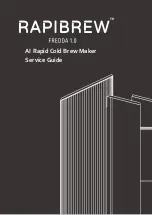
Page 19
For technical questions, please call 1-888-380-0318.
Item 64804 64805
Sa
FE
ty
Maint
E
nanc
E
Ba
S
ic W
E
lding
W
E
lding
t
ip
S
S
E
tup
1.
Make practice welds on pieces of scrap the
same thickness as your intended workpiece
to practice technique before welding anything
of value.
Clean the weld surfaces thoroughly
with a wire brush or angle grinder; there
must be no rust, paint, oil, or other materials
on the weld surfaces, only bare metal.
2. Use clamps (not included) to hold the workpieces
in position so that you can concentrate on
proper welding technique. The distance
(if any) between the two workpieces must be
controlled properly to allow the weld to hold
both sides securely while allowing the weld
to penetrate fully into the joint. The edges of
thicker workpieces may need to be chamfered
(or beveled) to allow proper weld penetration.
notice:
When welding equipment on a vehicle,
disconnect the vehicle battery power from both the
positive connection and the ground before welding.
This prevents damage to some vehicle electrical
systems and electronics due to the high voltage
and high frequency bursts common in welding.
3. Clamp Ground Cable to bare metal on the
workpiece near the weld area, or to metal work
bench where the workpiece is clamped.
4. Set the Wire Speed, Voltage, and Inductance Knobs
to the desired settings. Refer to the Settings
Chart on the inside of the Welder door.
note:
The initial settings may need to be adjusted
after stopping and carefully inspecting the weld.
Proper welding takes experience.
clamps
workpieces
chamfer thick workpieces.
clean
surfaces to
bare metal.
Workpiece
ground
clamp
clean
surface to
bare metal.
Setting up the Weld














































